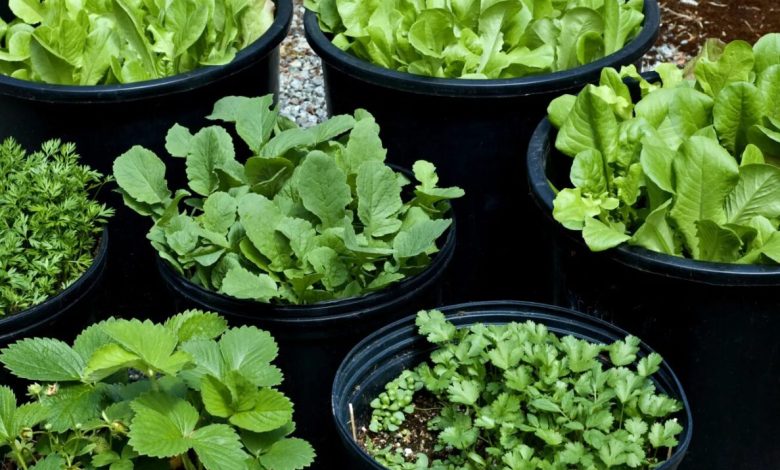Growing vegetables in pots for beginners

Growing vegetables in pots for beginners – Growing your own vegetables in pots is an increasingly popular way to enjoy fresh produce, especially for those with limited outdoor space. Whether you’re living in an apartment with a balcony or want to maximize your garden’s potential, container gardening offers a flexible and rewarding experience. This guide will provide beginners with essential tips and insights on how to successfully grow vegetables in pots, bringing the farm-to-table concept right to your doorstep.
Getting Started: Choosing the Right Containers
The first step in container gardening is selecting the appropriate pots. While traditional terracotta pots are classic, there are many other materials to consider, each with its own benefits:
- Plastic Pots: Lightweight and affordable, plastic containers retain moisture well. They are ideal for beginners due to their accessibility and transportability.
- Clay or Terracotta Pots: These are more aesthetically pleasing and porous, promoting better airflow to the roots. However, they may dry out quickly, requiring more frequent watering.
- Fabric Grow Bags: These are breathable and promote healthy root-pruning. They are particularly effective for root vegetables and can be packed away easily when not in use.
Ensure that each container has adequate drainage holes to prevent waterlogging, which can lead to root rot. The size of the pot should also be appropriate for the vegetable you choose to grow—larger vegetables generally require more space for roots to expand.
Selecting the Best Vegetables for Container Gardening
For beginners, it’s crucial to start with vegetables that are easy to grow and manage in pots. Some great options include:
- Lettuce and Salad Greens: Quick to grow and harvest, greens thrive in containers. They require shallow pots and can be harvested continually throughout the season.
- Tomatoes: A staple for container gardening, tomatoes require a larger pot but offer rich rewards. Cherry and bush varieties are particularly suited for pots.
- Peppers: Both sweet and hot pepper varieties do excellently in containers. They need plenty of sunlight to produce optimal yields.
- Radishes: Fast-growing and perfect for pots, radishes can go from seed to table in a matter of weeks.
- Herbs: While not vegetables, herbs like basil, parsley, and mint complement your container garden and help with culinary endeavors.
Soil and Planting Conditions
The success of a container garden heavily depends on the quality of soil used. Avoid regular garden soil because it’s typically too heavy and can compact in pots, limiting root growth and oxygen flow. Instead, opt for a high-quality potting mix that promotes aeration and retains adequate moisture.
Adding organic matter such as compost can enrich the soil, providing essential nutrients for your plants to thrive. Additionally, mixing in perlite or vermiculite can enhance drainage and prevent soil compaction.
Watering and Fertilization: Essential Care
Growing vegetables in pots for beginners – Consistent watering is key to successful container gardening. Pots tend to dry out faster than traditional gardens, especially in sunny or windy conditions. Here are some tips for watering:
- Test Moisture Levels: Insert your finger about an inch into the soil to feel for moisture. If it’s dry, it’s time to water.
- Watering Frequency: Generally, container plants require watering once a day, but this can vary based on weather and plant needs. Early morning is the best time to water, reducing evaporation and allowing plants to dry before nighttime.
- Avoid Overwatering: While keeping soil moist is vital, overwatering can be detrimental. Ensure proper drainage and monitor plant health to maintain the ideal balance.
Fertilization supports plant growth and productivity. A slow-release fertilizer mixed into the soil during planting provides a nutrient foundation. Throughout the growing season, a liquid fertilizer can be applied every two to four weeks to maintain vigor.
Managing Light and Temperature
Most vegetables require ample sunlight to flourish. Aim to position your pots where they receive at least six to eight hours of direct sunlight daily. Balconies, patios, and windowsills are often suitable spots.
Extreme temperatures can pose a challenge, particularly on hot days. Protect your plants by providing shade during peak sun or by repositioning pots to avoid scorching. Conversely, during colder nights, bringing pots indoors or covering them can prevent heat loss.
Dealing with Pests and Diseases
One of the benefits of container gardening is the reduced risk of pests compared to traditional gardens. However, vigilance is necessary to protect your investment:
- Inspect Regularly: Check plants for signs of pests like aphids, spider mites, and whiteflies. Early detection makes management easier.
- Natural Remedies: Use insecticidal soap or neem oil to deter and manage pests safely. Encouraging beneficial insects like ladybugs can also help control pest populations.
- Sanitation: Keep the area around your containers clean and dispose of debris, which can harbor pests and diseases.
Harvesting and Enjoying Your Homegrown Vegetables
Harvesting is undoubtedly the most rewarding part of gardening. Timely harvesting not only brings fresh flavors to your kitchen but also encourages continued plant production. Here’s how to make the most of your yields:
- Lettuce and Greens: Use the “cut and come again” method, which involves trimming leaves as needed while leaving the plant to regrow.
- Tomatoes and Peppers: Wait until fruits are fully colored before picking. Regular harvesting can lead to higher yields.
- Herbs: Prune herbs regularly to encourage bushy growth and prevent them from flowering, which can reduce their culinary quality.
Expanding Your Knowledge and Skills
As you gain confidence and experience with growing vegetables in pots, consider experimenting with more diverse crops or different growing techniques. Vertical gardening, using trellises, can maximize space and increase your production even further. Growing dwarf fruit trees or more challenging vegetables could also be a new endeavor.
Joining gardening communities, either online or in-person, can provide valuable support, inspiration, and shared experiences. This can be a wonderful way to expand your horticultural knowledge and enhance your enjoyment of this rewarding hobby.
For more information, check out these resources:
